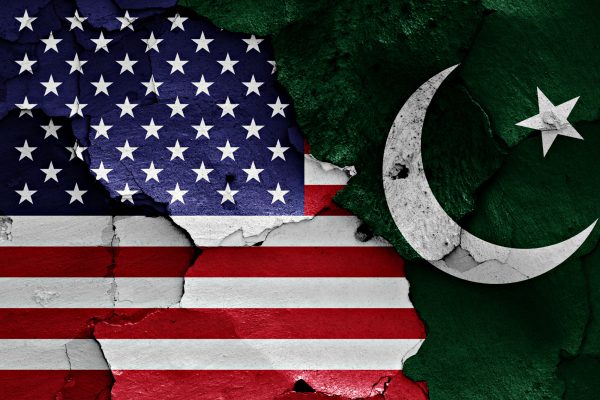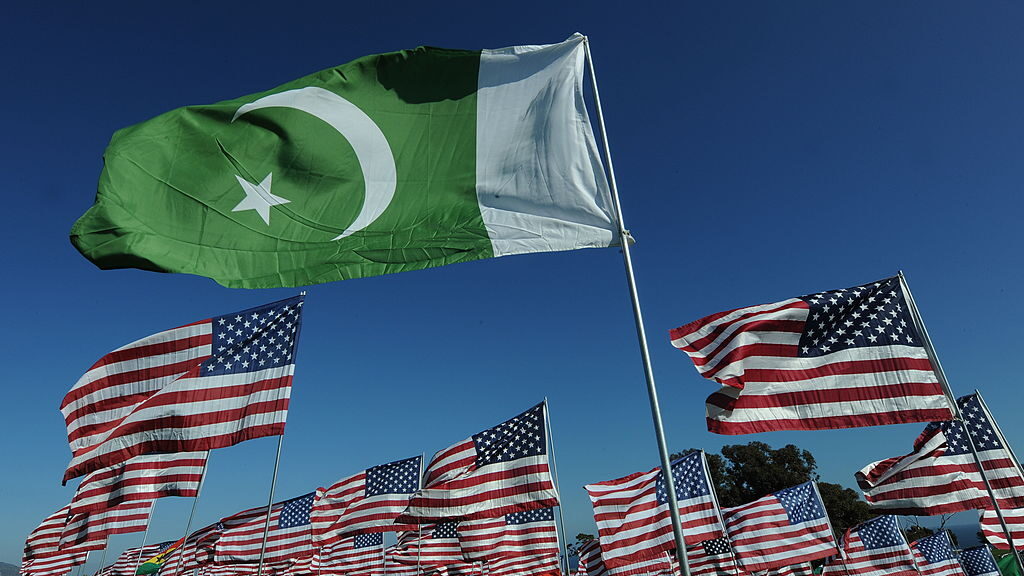The Role of Pakistan in US Middle East Strategy
The Middle East has long been a focal point of American foreign policy, driven by a combination of strategic, economic, and security interests. Within this context, Pakistan has played a pivotal yet often understated role in the broader US strategy in the region. As a nuclear-armed nation situated at the crossroads of South Asia, Central Asia, and the Middle East, Pakistan's geopolitical importance is undeniable. Its historical ties, military capabilities, and regional influence position it as a key player in shaping US objectives in the Middle East.
This article explores Pakistan’s multifaceted role in the US Middle East strategy, emphasizing historical context, regional involvement, economic ties, and the opportunities and challenges it presents for American foreign policy.
Historical Context: Pakistan’s Strategic Importance
Since its independence in 1947, Pakistan has been a significant player in US foreign policy, particularly during the Cold War. Its proximity to the Middle East, shared religious and cultural ties, and willingness to align with the US during critical periods have underscored its importance.
The Cold War Era
During the Cold War, Pakistan emerged as a close ally of the US, joining military alliances such as the Southeast Asia Treaty Organization (SEATO) and the Central Treaty Organization (CENTO), aimed at containing Soviet expansion in Asia and the Middle East. Pakistan’s strategic location made it an invaluable partner, particularly during the Soviet invasion of Afghanistan in 1979, where it became a frontline state supporting US efforts to counter Soviet influence.
Support for US Interests in the Gulf
Pakistan’s military ties with Gulf states like Saudi Arabia and the United Arab Emirates (UAE) were strengthened in the 1970s and 1980s. Pakistani military personnel stationed in these nations contributed to their defense infrastructure, indirectly supporting US goals of ensuring stability in the Gulf region.
The War on Terror
After 9/11, Pakistan became a critical state in the US-led War on Terror. While this effort was primarily focused on Afghanistan, the US military presence in the region had significant implications for the Middle East, particularly in counterterrorism collaboration, intelligence sharing, and regional stability.
Pakistan’s Role in US Middle East Strategy
1. Military Collaboration and Security Dynamics
Pakistan’s military capabilities have been a critical asset in the US strategy for maintaining security and stability in the Middle East.
- Training and Expertise: Pakistan has provided military training to personnel from Gulf states such as Saudi Arabia and the UAE for decades. This collaboration has bolstered the defensive capabilities of US allies in the region. The presence of Pakistani military advisors in these nations aligns with US objectives of maintaining a robust defense framework in the Gulf.
- Peacekeeping Operations: Pakistan has significantly contributed to United Nations peacekeeping missions in the Middle East. Its troops have served in conflict zones like Lebanon and the Golan Heights, indirectly supporting US efforts to stabilize the region.
- Counterterrorism Efforts: Pakistan’s experience in combating terrorism has made it a valuable partner in the global fight against extremist groups. While its primary focus has been South Asia, Pakistan’s intelligence sharing and operational support have occasionally extended to Middle Eastern theaters.
2. Economic and Energy Linkages
The US strategy in the Middle East is deeply intertwined with energy security, and Pakistan’s economic ties with the region play a significant role.
- Remittances from the Middle East: Millions of Pakistanis work in Gulf Cooperation Council (GCC) countries, sending billions of dollars in remittances back home annually. This economic connection strengthens Pakistan’s ties with these nations, which are also key US allies in the region.
- Trade and Investment: Pakistan’s trade relations with Middle Eastern nations, particularly in sectors like agriculture, construction, and technology, create opportunities for economic stability. The US views economic stability in the Middle East as a cornerstone of its broader strategy, and Pakistan’s involvement contributes to this goal.
- Energy Imports: Pakistan relies heavily on energy imports from the Middle East, particularly Saudi Arabia and the UAE. Ensuring the uninterrupted flow of oil and gas from the region to countries like Pakistan aligns with US interests in maintaining global energy security.
3. Diplomatic Mediation and Religious Ties
As a predominantly Muslim country with deep connections to the Middle East, Pakistan enjoys a unique diplomatic position in the region.
- Mediation in Regional Conflicts: Pakistan has occasionally acted as a mediator in Middle Eastern conflicts. For instance, it has worked to ease tensions between Saudi Arabia and Iran, two major players in the region. The US, which has strategic interests in both countries, views Pakistan’s mediatory efforts as a potential avenue for reducing instability.
- Islamic Solidarity: Pakistan’s membership in the Organization of Islamic Cooperation (OIC) and its close ties with Gulf states enhance its ability to influence regional dynamics. By fostering unity among Muslim-majority nations, Pakistan indirectly supports US objectives of promoting regional cooperation and reducing sectarian conflict.
Challenges in US-Pakistan Collaboration on the Middle East
Despite Pakistan’s strategic significance, several challenges complicate its role in US Middle East strategy.
Complex Ties with Iran: Pakistan shares a border with Iran and maintains a complex relationship with the country. While the US seeks to isolate Iran over its nuclear ambitions and regional policies, Pakistan cannot afford to alienate its neighbor. This balancing act often places Pakistan in a difficult position vis-à-vis US Middle East policy.
Perceived Alignment with China: The growing economic and strategic partnership between Pakistan and China, particularly through the China-Pakistan Economic Corridor (CPEC), has raised concerns in Washington. The US fears that Pakistan’s alignment with China could undermine its influence in the Middle East, where China is also expanding its presence.
Internal Stability Issues: Pakistan’s internal challenges, including political instability, economic crises, and terrorism, limit its capacity to fully engage in the Middle East. The US must carefully navigate these issues while seeking Pakistan’s cooperation.
Strained Bilateral Relations: US-Pakistan relations have been strained in recent years, particularly over issues such as counterterrorism cooperation, drone strikes, and the withdrawal from Afghanistan. These tensions occasionally spill over into the Middle Eastern context, affecting the effectiveness of their collaboration.
Opportunities for Enhanced Collaboration
Despite these challenges, there are numerous opportunities to strengthen US-Pakistan collaboration in the Middle East.
- Counterterrorism Cooperation: Enhanced intelligence sharing and joint operations against extremist groups in the Middle East could benefit both nations. Pakistan’s expertise in counterterrorism operations could complement US efforts in the region.
- Economic Partnerships: Encouraging US investment in Pakistan’s energy and infrastructure sectors, particularly with Middle Eastern backing, could create a win-win scenario for all parties involved.
- Leveraging Pakistan’s Religious Diplomacy: The US can support Pakistan’s mediatory efforts between Sunni-majority Saudi Arabia and Shia-majority Iran, potentially reducing sectarian tensions that destabilize the region.
- Regional Connectivity Initiatives: Projects like the Turkmenistan-Afghanistan-Pakistan-India (TAPI) pipeline and enhanced trade corridors could strengthen economic ties between South Asia and the Middle East, aligning with US interests in fostering regional integration.
Conclusion
Pakistan plays a critical role in US Middle East strategy, serving as a bridge between South Asia and the Gulf region. Its military capabilities, economic ties, and diplomatic influence make it a valuable partner for the US in addressing the region’s complex challenges.
However, the relationship is not without its difficulties, including geopolitical tensions, internal instability, and diverging priorities. To fully realize Pakistan’s potential as a strategic ally in the Middle East, the US must adopt a nuanced approach that addresses these challenges while leveraging the opportunities for collaboration.
In the evolving geopolitical landscape, Pakistan’s role in the Middle East is likely to grow in significance. By fostering a stronger partnership with Pakistan, the US can enhance its ability to achieve its strategic objectives in the region, ensuring stability, security, and prosperity for all stakeholders involved.




